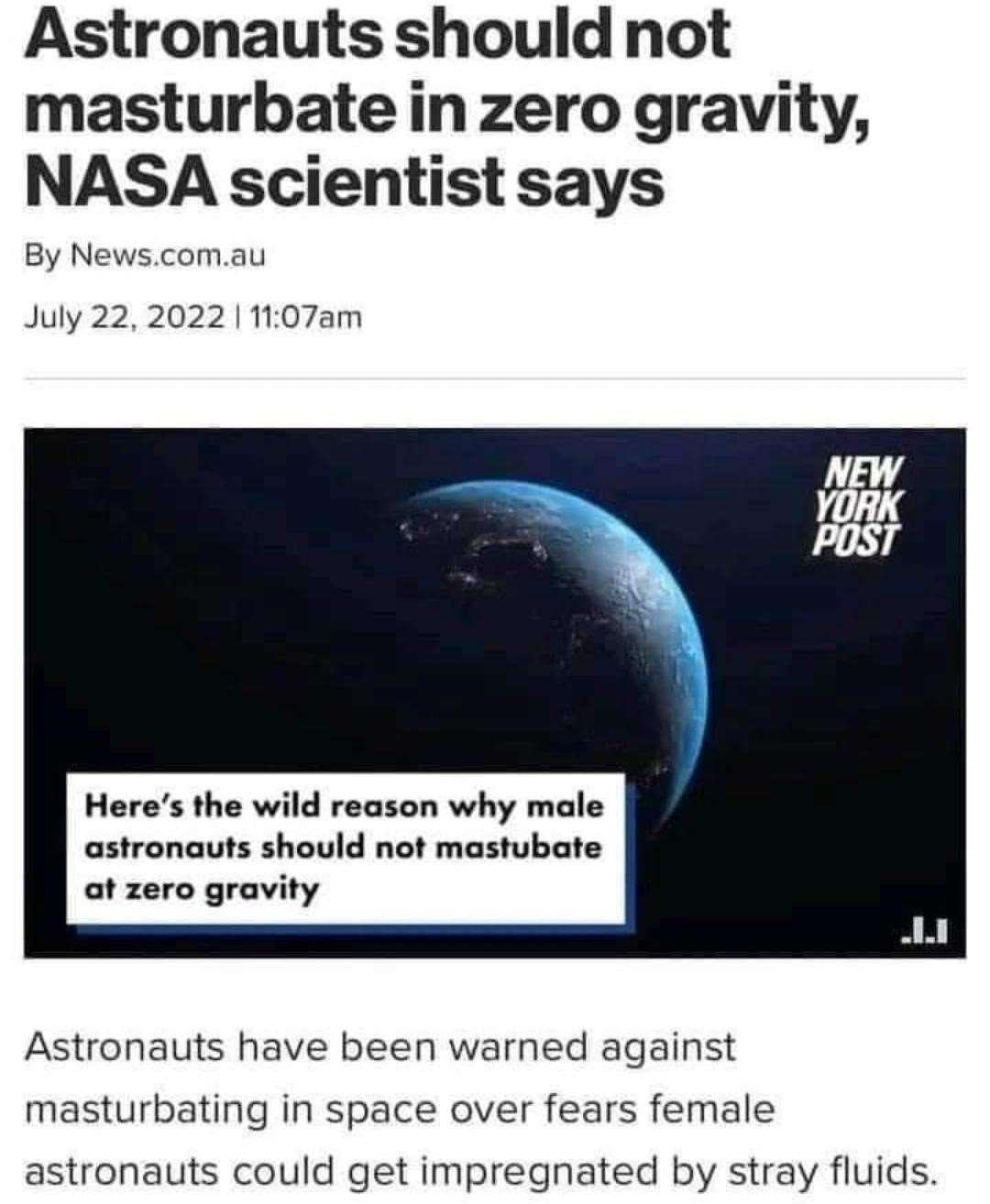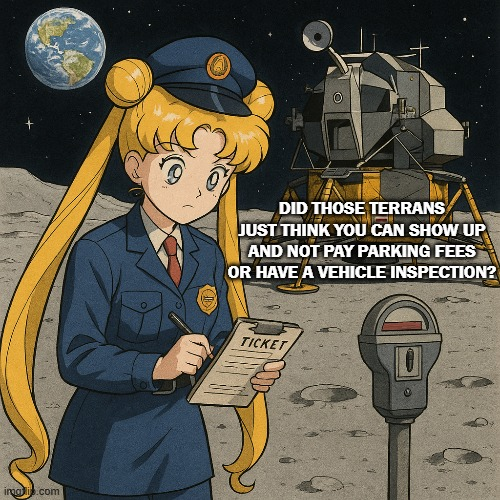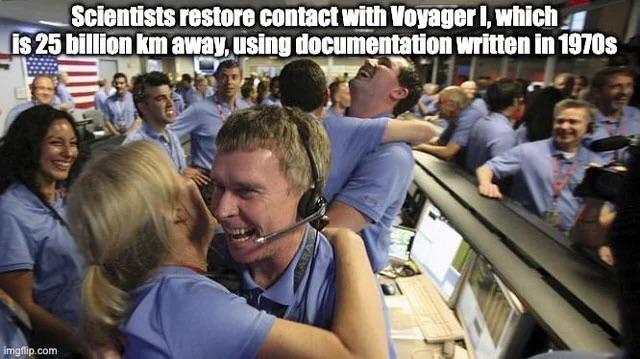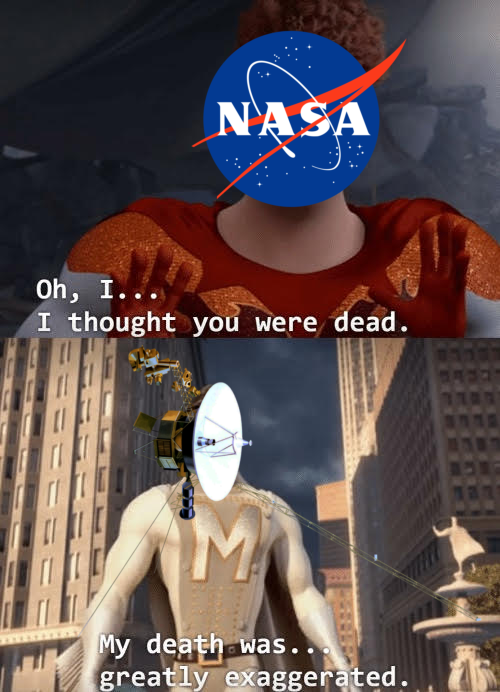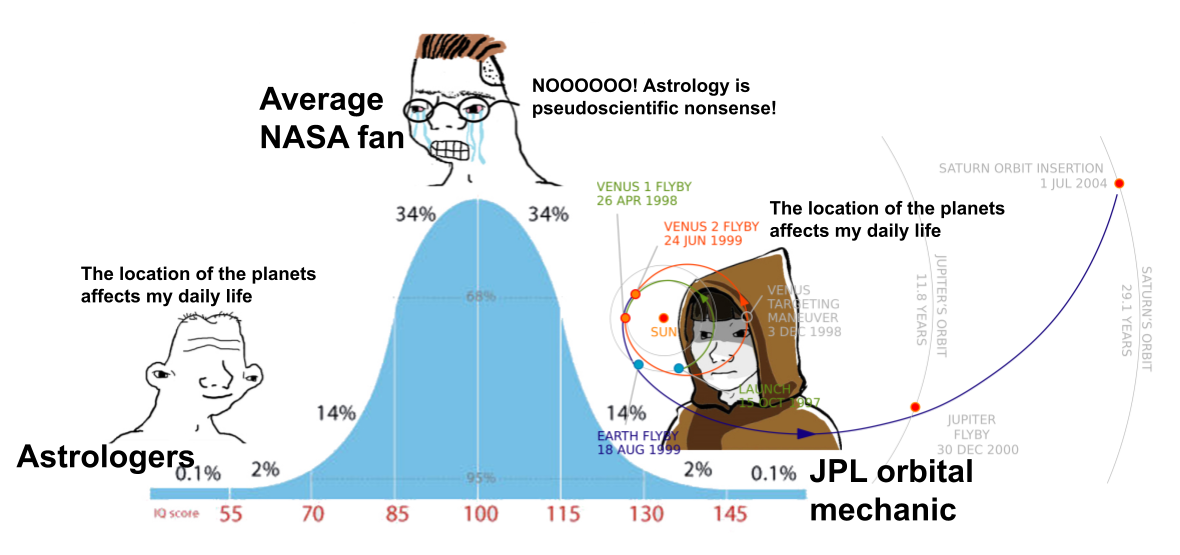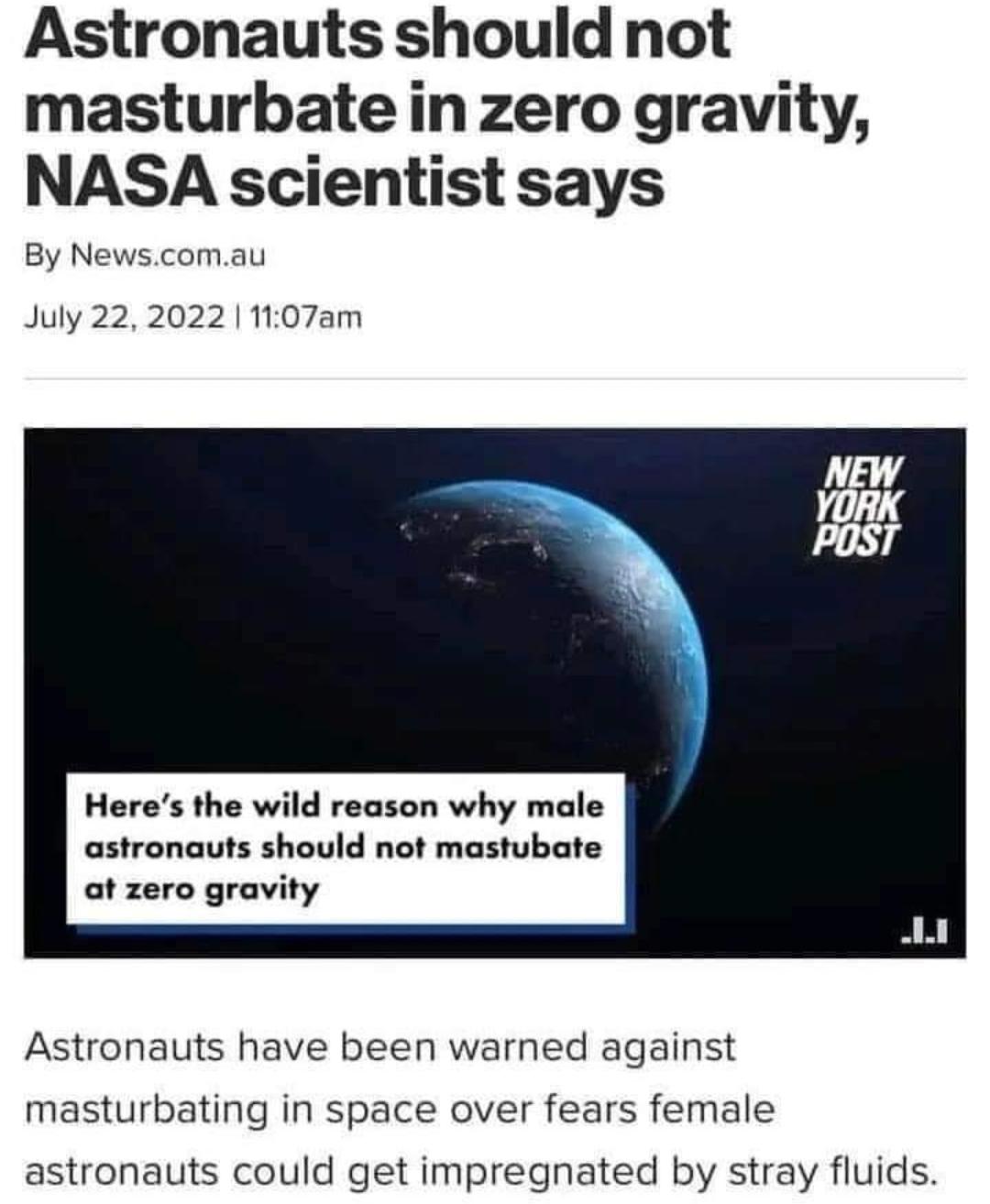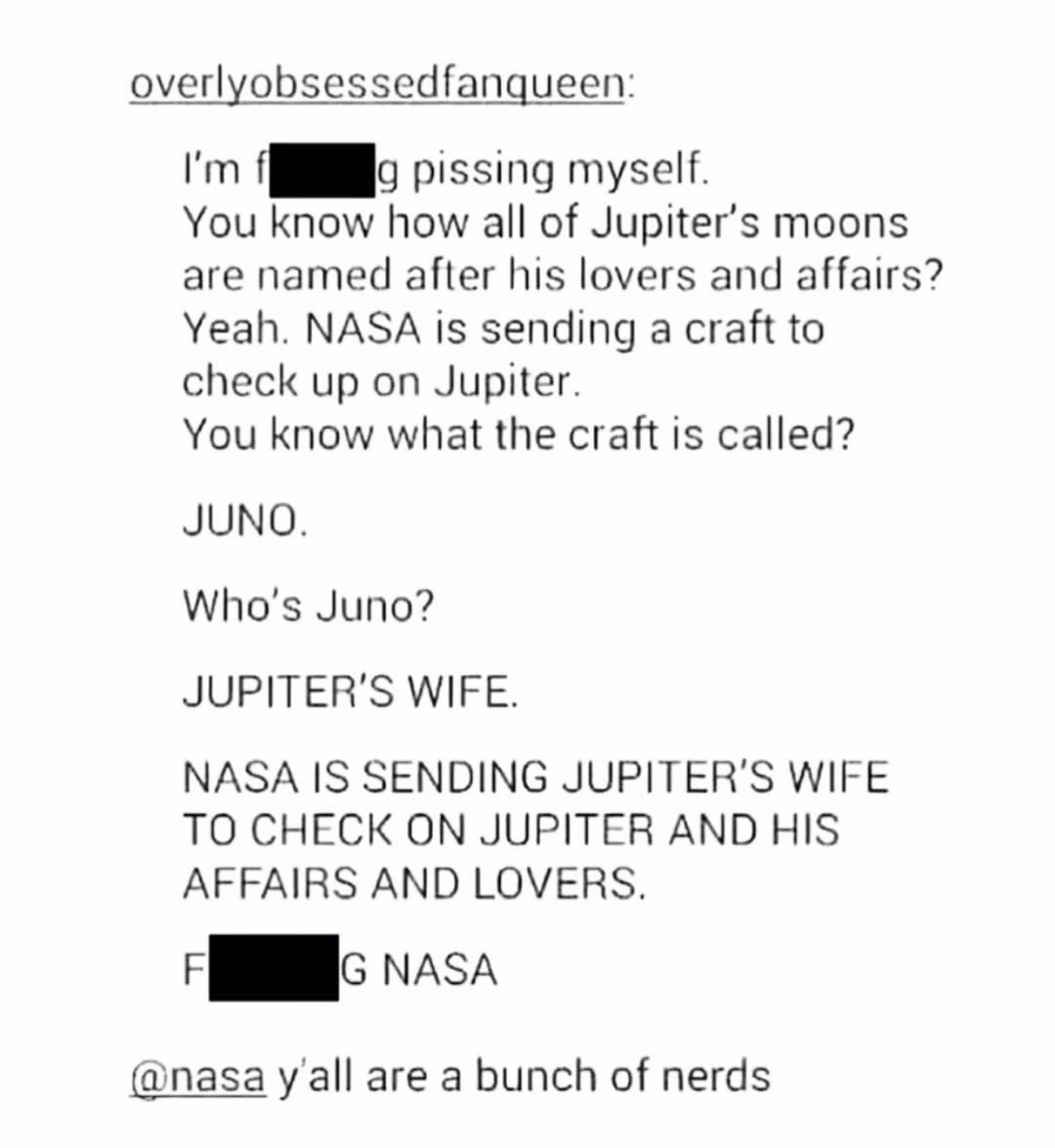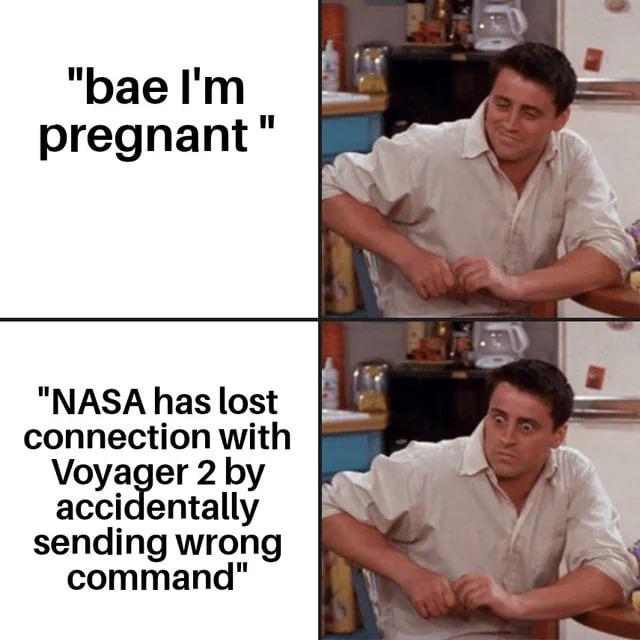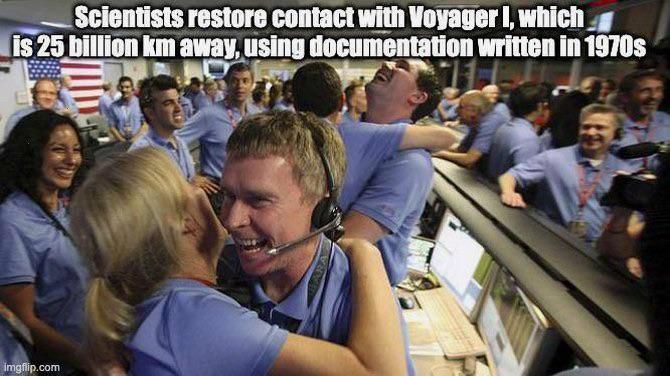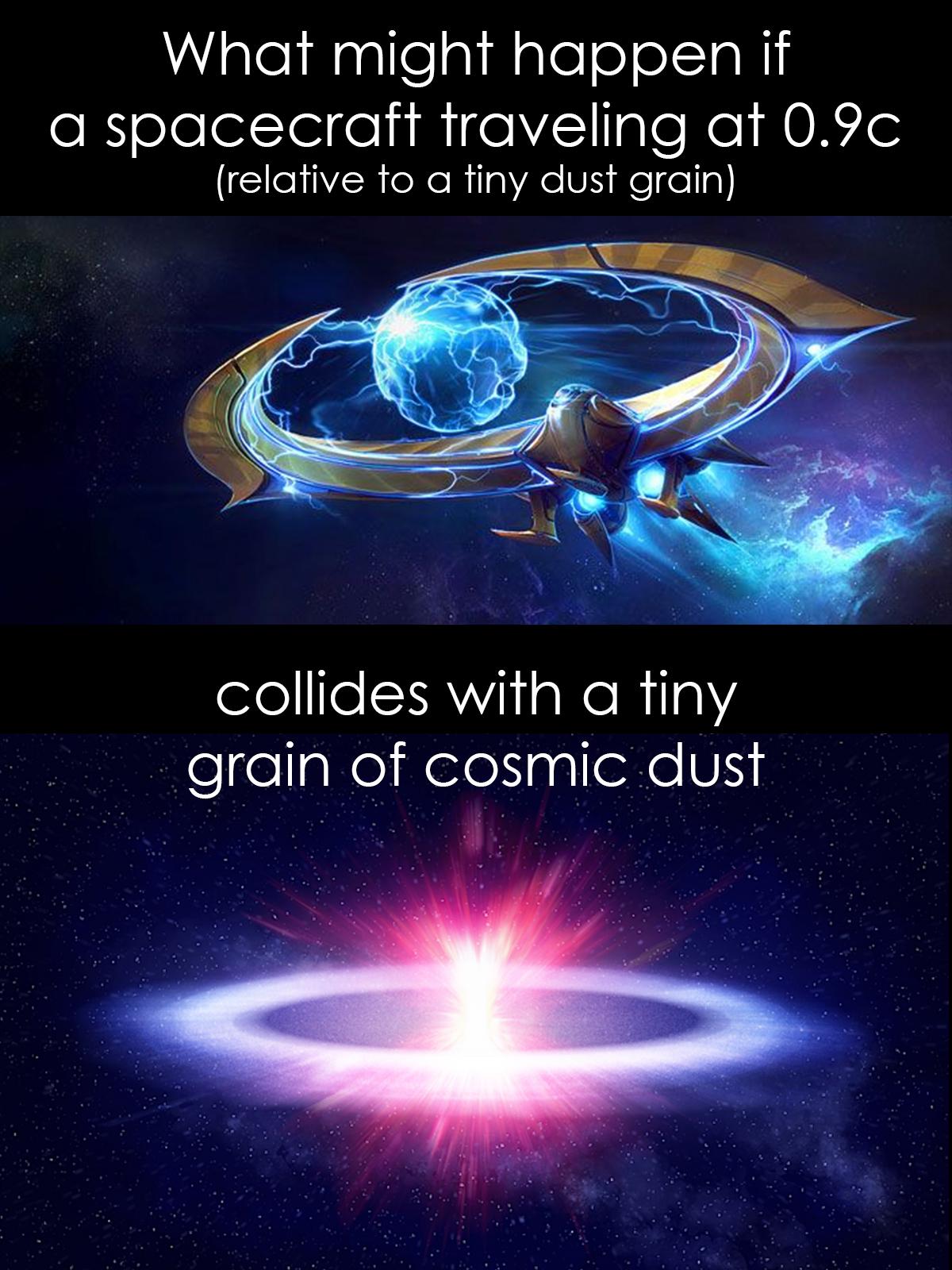The cosmic drama unfolds! NASA's Juno spacecraft mission is a brilliant astronomical pun hiding in plain sight. In Roman mythology, Jupiter (Zeus in Greek) was notoriously unfaithful, and his many lovers became the names of Jupiter's moons. Meanwhile, Juno (Hera) was his long-suffering wife. So NASA essentially sent Jupiter's wife to spy on him and his 79+ moons/affairs! The spacecraft has been orbiting Jupiter since 2016, collecting data on the gas giant's composition, gravity field, and magnetic field. Clearly, someone at NASA's mission-naming department deserves a raise for this mythological relationship counseling session happening 365 million miles from Earth.


 Academia
Academia
 Ai
Ai
 Astronomy
Astronomy
 Biology
Biology
 Chemistry
Chemistry
 Climate
Climate
 Conspiracy
Conspiracy
 Earth-science
Earth-science
 Engineering
Engineering
 Evolution
Evolution
 Geology
Geology
